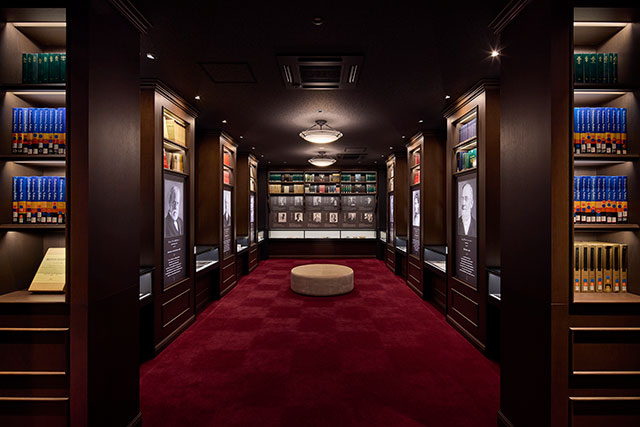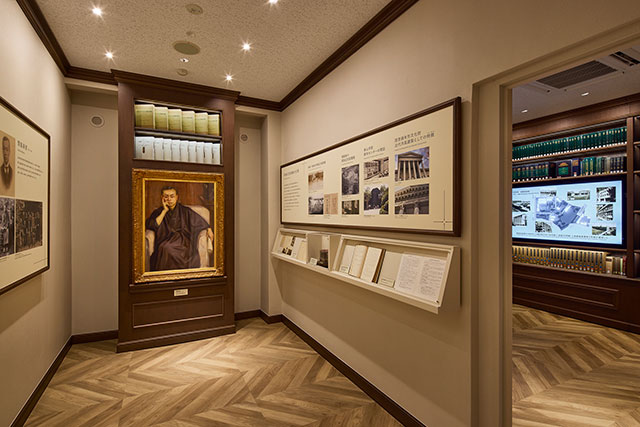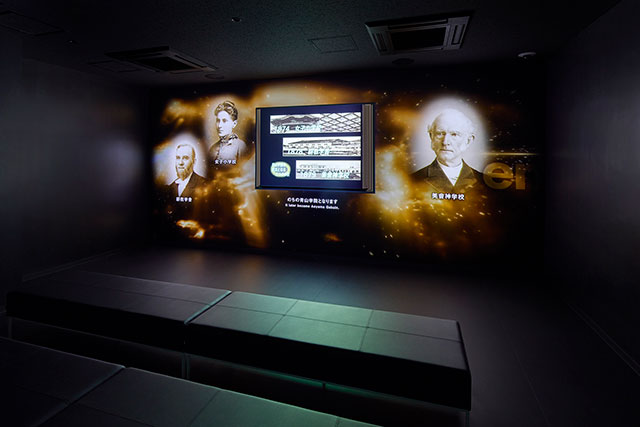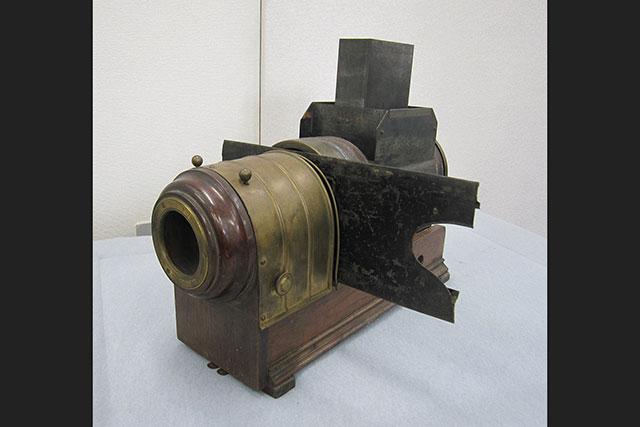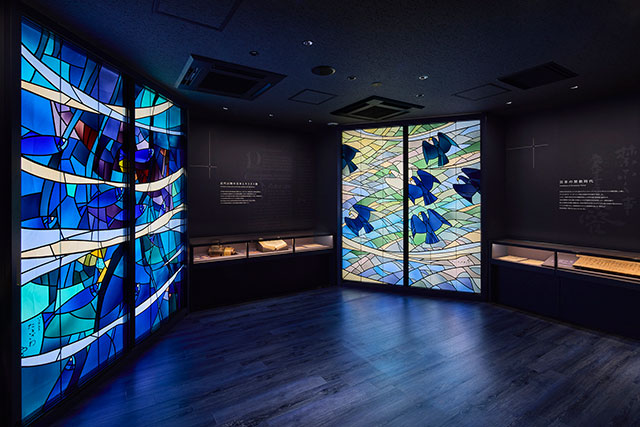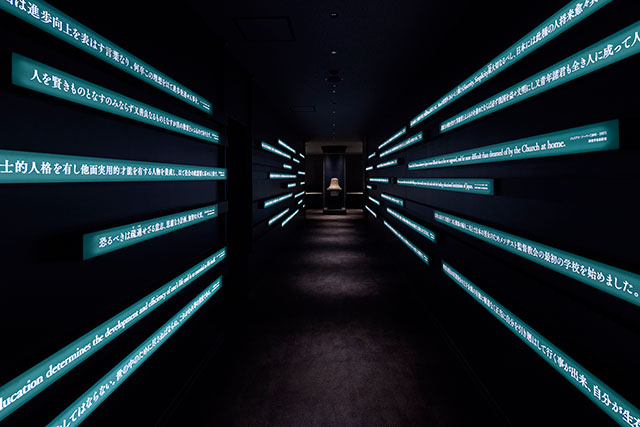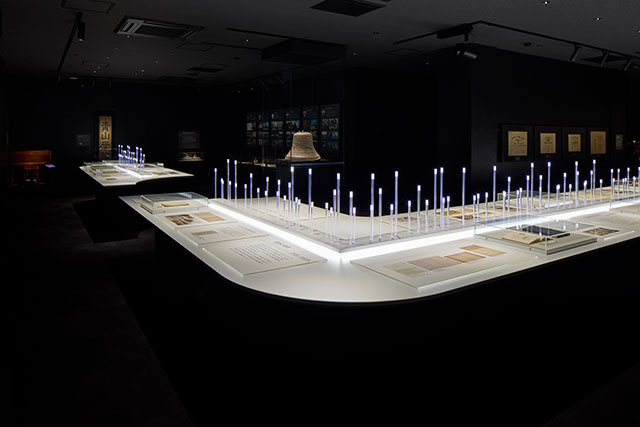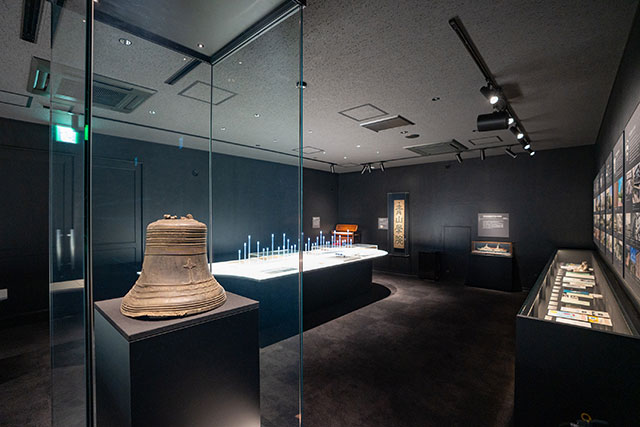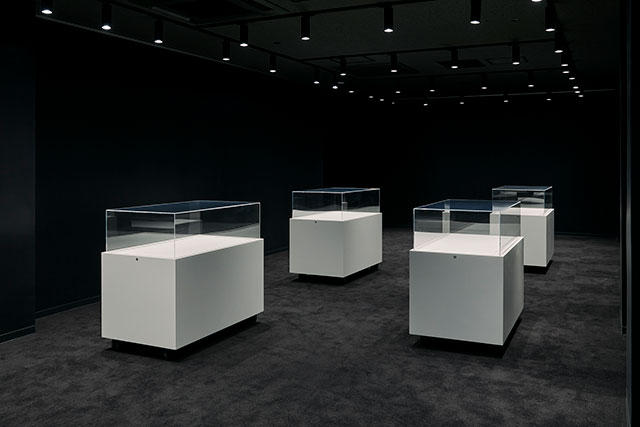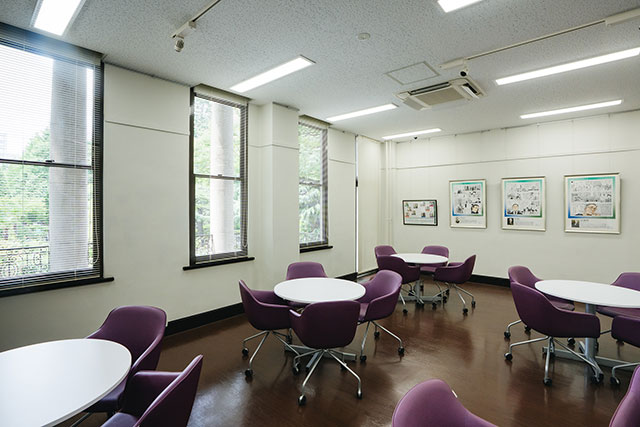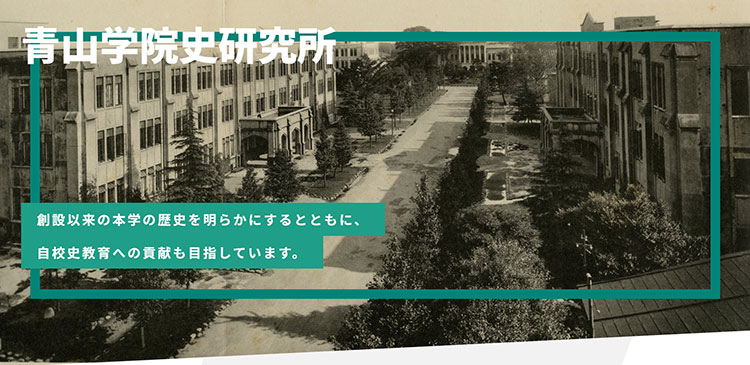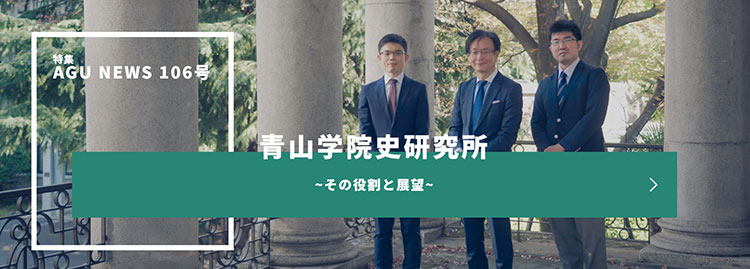Passing on the founding spirit
"Aoyama Museum"
Opened
June 19, 2025
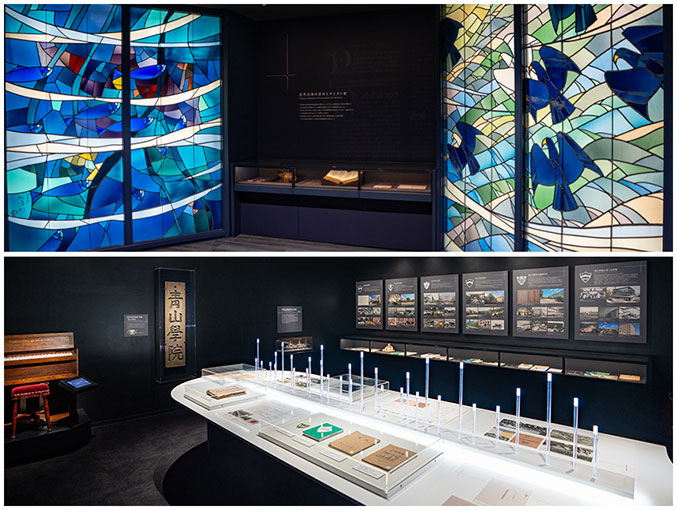
Traced through abundant materials
150 Years of Aoyama
On May 8, 2025, Aoyama opened the Aoyama Gakuin Museum as part of the 150th anniversary celebration of the founding of Gakuin. Aoyama The museum, located on the campus Majima Memorial Hall, exhibits a wide variety of materials, from valuable actual documents that convey the spirit of the founding of the school to a touch-screen digital archive, allowing visitors to experience the 150 years of its history.
 Interview with the Director
Interview with the Director
Director of Aoyama Museum
Director of Aoyama Institute of History
Dean College of Literature
Professor, Department of Department of History College of Literature
Kazuyuki Kobayashi
Aoyama Gakuin University Graduate School Graduate School of Literature Department of History D. in History (). D. in History (Aoyama Gakuin University). After working as an assistant at College of Literature the same university, a research officer at Chief the Imperial Household Agency's Shuryo Department, and an assistant professor at College of Literature Komazawa University, he was appointed as a professor at Aoyama Gakuin University College of Literature Department of History in April 2006, and has been in his current position since April 2021. Aoyama Gakuin University Aoyama He is the director of the Institute of Gakuin History. His major works include "Meiji Rikken Seiji to Noble House" (Meiji Constitutional Politics and the House of Peers) (Yoshikawa Kobunkan, 2002) and "Kokumin Shugi no Jidai: Meiji Nihon wo Sustaining People" (The Age of "Nationalism": People Who Supported Meiji Japan) (Kadokawa Sensho, 2017).
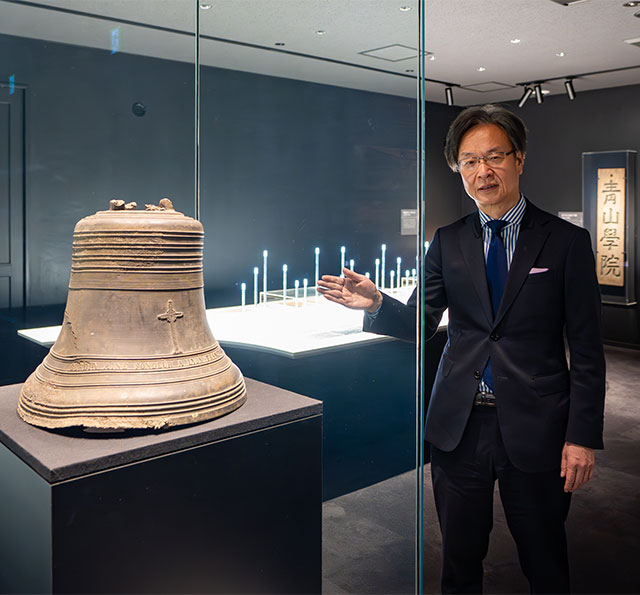
■ The Aoyama Museum and the 150-Year History of Aoyama, which convey the founding spirit of the school
Aoyama Museum displays and exhibits materials relating to the history of Aoyama spanning over 150 years from its early days, as well as materials relating to Christianity in early modern and modern Japan. From actual materials that convey the atmosphere of the time to miniatures of past school buildings, video materials, and digital archives, you can learn about the history of Aoyama from various angles.
Aoyama has continued to uphold its Christian-based education despite hardships such as earthquakes and war damage. Learning about its history and reaffirming its founding principles will surely serve as the foundation for new steps forward. By witnessing the path and achievements of its predecessors who embodied the school motto, "Salt of the Earth, Light of the World," visitors may find clues to help them become servant leaders themselves. Furthermore, the footsteps of those involved in the founding of Aoyama occupy an important place in modern Japanese history. Learning about the history of our university will enrich your learning about modern Japanese politics, diplomatic history, and the history of Christianity in Japan.
The foundation for the museum's opening was the book "Aoyama 150 Year History." The practical work of compiling it was undertaken by Aoyama Gakuin University Aoyama History Research Institute. This institute was based on the "Aoyama 150 Year History Compilation Office" located in the former Aoyama Gakuin Archives. "Aoyama 150 Year History" consists of five volumes: two reference volumes, two general history volumes, and one separate volume, "Aoyama 150 Years in Photographs." It looks back on the history of Aoyama from its founding in the Meiji period to its 150th anniversary based on reliable sources. The vast amount of material collated through the compilation of "Aoyama 150 Year History" and its comprehensive yet detailed historical perspectives support the foundation of the museum.
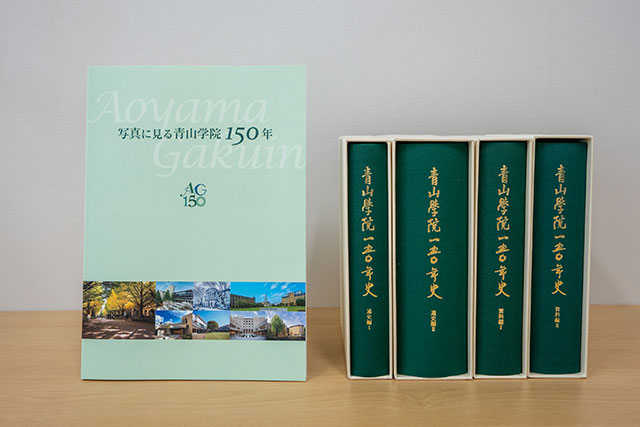 From the left: "150 Years Aoyama in Photographs," "150 Years Aoyama" General History Volumes I and II, and "150 Years of Aoyama" Reference Volumes I and II, all 5 volumes
From the left: "150 Years Aoyama in Photographs," "150 Years Aoyama" General History Volumes I and II, and "150 Years of Aoyama" Reference Volumes I and II, all 5 volumes
The Aoyama Museum is housed within Majima Memorial Hall, which was constructed in the prewar Showa period as the school's central library. This building is a registered tangible cultural property (architecture) of the nation, and as it previously housed the former Aoyama Gakuin Archives, it can be said to be a culturally and historically symbolic structure of Aoyama. As an old building, Majima Memorial Hall has structural limitations, necessitating various creative approaches to utilizing the space. Therefore, by assigning an exhibition theme to each room, the exhibits are clearly defined and visitors are able to experience an immersive experience. The English term "museum" also reflects the internationality that Aoyama has always valued. Going forward, we hope to continue collecting and exhibiting a wide variety of cultural artifacts related to Aoyama, going beyond historical materials.
The Aoyama Museum aims to become a "temple of the founding spirit" at our university. We hope that the museum will become a hub of interaction for those connected to the university, and that it will also serve as an opportunity to widely raise awareness of Aoyama among people in the surrounding area, and in Japan and abroad.
■ Introduction to each exhibition room
Over 150 years ago, Dora E. Schoonmaker, a female missionary sent by the Methodist Episcopal Church in the United States with the aspirations of spreading Christianity and educating women, recalled the opening of a girls' elementary school, one of the three origins of Aoyama, saying, "It was truly a small light." The history of Aoyama, which began with this small school, has continued to this day, guided by the light of faith lit by Schoonmaker and others. Based on this memorable phrase, "a small light," the museum's design concept is "Silent Light." Just as the light of Christian faith, which began small but gradually spread across the country, will also guide the development of each exhibit at this museum.
① Servant Leader Room
This exhibition room introduces servant leaders who have contributed to the development of Aoyama since its founding. Here, visitors are greeted by a warm glow that reflects their "spirit of love and service." As Majima Memorial Hall was the university's first central library, the interior is designed to resemble a study. Handwritten letters, documents, and photographs from the past, written by those who led Aoyama and past missionaries, convey the personalities of each individual. These materials also reveal the tremendous support and cooperation that Aoyama received at its founding, as well as the efforts made to ensure that Aoyama 's Christian education took root in Japanese society. Tracing the lives and thinking of our predecessors will provide insights into how we can live as servant leaders ourselves.
② Mashima Memorial Room
This corner commemorates Mashima Tonohiko, an alumnus who contributed to the construction of Majima Memorial Hall, and also introduces the changes in the campus and school buildings that have supported Aoyama 's education. In addition to a video that compactly summarizes the changes in the Aoyama Campus grounds and school buildings, the corner also displays miniature reproductions of school buildings from the Meiji and Taisho periods, as well as cultural heritage from the Edo period that was excavated on the campus grounds, allowing visitors to enjoy learning from the perspectives of architectural and cultural history. Through the changes in the campus, visitors can visually trace the history of Aoyama, which has overcome many difficulties and achieved further development.
3. Museum Theater
A video introducing the history of Aoyama, "Three Seeds Sown on the Ground," has been specially edited for the museum and is shown at all times. The video vividly conveys the history of Aoyama, which began with three schools: a girls' elementary school, Kokyo Gakusha, and Bikai Theological Seminary, and has been woven over the years. You can also see the development of the area around Aoyama.
4. History of Christianity
This section introduces the history of the Methodist Church, the origin of Aoyama, as well as the history of Christianity in Japan during the period when Christianity was prohibited in early modern Japan and since the modern era. Valuable materials such as notices posted during the period when Christianity was prohibited, a magic lantern from the Meiji era, and a replica of a 15th-century Bible written in Latin provide insight into the history of Christian faith in Japan.
It also shows how Aoyama has remained steadfast in its Christian-based education throughout the ages. The two stained-glass windows that adorn the interior were moved from Wesley Chapel, which was located on the university's Atsugi campus, and feature motifs of the eagle and fish, symbols of the Bible. The striking blue stained-glass windows emit a pure light that evokes the preciousness of faith and the dawn of Aoyama, gently enveloping visitors.
⑤ Corridor Gallery
The words of those who built Aoyama 's history emerge from the darkness, guiding visitors like a path of light. These words of encouragement for students and mottos carry weight, and visitors may find one that resonates with them. The individual histories seen in each exhibition room are brought together in this gallery, and the shining words act as guideposts, guiding visitors to the next exhibition room, "The History of Aoyama."
⑥The history of Aoyama
This exhibition room introduces the 150-year history of Aoyama in one flow. Guided by the light of 150 candles, the history of Aoyama unfolds within modern Japanese history. The exhibits are organized into six themes: "Foundation of the Academy," "To the Land of Aoyama," "Aoyama in the Taisho Period," "War and Education," "Postwar Reconstruction and Development of Aoyama," and "Development of the Academy's Established Schools." They provide an overview of Aoyama 's history from its founding, which originated from three schools, to its 150th anniversary. The exhibit is particularly rich in materials related to Aoyama 's distinctive "Christian education" and "English education," and includes graduation certificates written in English from the Meiji period, conveying the atmosphere of the time.
The first thing that greets visitors in this exhibition room is the clock tower bell (made in France in 1880) that once stood in the Philander Smith Biblical Institute, the former school of theology. Though the building was damaged in the Great Kanto Earthquake, at the time of its construction it was known as the "Clock Tower Seminary" and was a symbol of Aoyama. The exhibition also features an organ (made in the United States around 1861) brought from the United States by missionary Matilda Spencer, who dedicated herself to nurturing female evangelists known as "Bible Women," as well as a folding reed organ (made in Japan around 1920) designed for missionary work in various regions. The sounds of these two organs are available to listen to at any time. A closer look at the replica sailor uniform worn by Aoyama Women's High School reveals repairs to the sleeves, providing insight into the lives of people during wartime.
⑦ Special Exhibition Room
Special exhibitions will be held on specific themes. Special and planned exhibitions are scheduled to be held from autumn 2025 onwards.
8. Multipurpose lounge and document viewing area
The multipurpose lounge on the second floor of the building has a bright and open atmosphere. Touchscreen digital archives can be touched and operated. Furthermore, in the materials viewing area, valuable materials collected by Aoyama can be viewed after completing the required procedures. The lounge also responds to inquiries about the history of Aoyama from both inside and outside the university. On display are panels introducing 10 servant leaders * who supported Aoyama in its early days, each on an A1-sized manga page. These works were drawn by manga artist Masashi Kishimoto, and the "feelings" of the 10 leaders are brought to life in the manga with overwhelming force. The human characters are introduced alongside the historical background of the time, making this a valuable work that traces the origins of Aoyama.
*Dora E. Schoonmaker, Julius Soper, Robert S. McCray, John F. Goucher, Sen Tsuda, Yoichi Honda, Umeyoshi Yoneyama, Otohiko Majima, Ginjiro Katsuta, Junshiro Bandai
■ From the past to the future - The future of Aoyama Museum
Aoyama Museum is planning a variety of initiatives. First, it will apply for approval as a museum-equivalent facility (designated facility) and support students seeking to obtain curatorial qualifications. It is also planning guided tours and lectures by museum curators, with future plans calling for courses aimed at elementary and junior high school students from Aoyama 's affiliated schools, as well as courses for adults. It is also considering the planning and sale of museum merchandise. It will also collaborate with neighboring communities, other universities, and overseas institutions to conduct historical research and lectures. Research findings at the museum will be published in the journal Aoyama Modern History Research. Furthermore, this fall, a symposium based on the museum's 150-year history is planned in collaboration with the Aoyama History Research Institute.
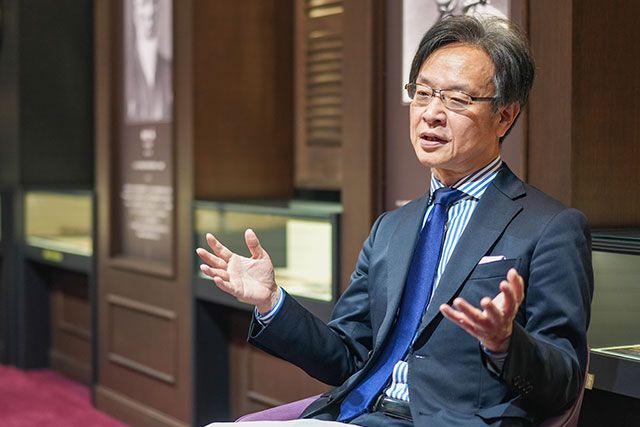
We would like to express our sincere gratitude to everyone for their donations and support in opening this museum. Your generous donations will be used effectively for future development.
At Aoyama Museum, you can see the stories of our predecessors who found a path to development amidst various hardships. When you experience doubts or difficulties in your daily life or studies, you may find some hints here. We also hope that parents and prospective students who are interested in our school will find a visit to the museum to gain a better understanding of the school. The museum has an imposing exterior, but once you open the doors, you will find a warm space that anyone can feel free to drop in to. We hope that as many people as possible will visit Aoyama Museum when they want to learn about history, find hints on how to live, or for any other occasion.

Usage Guide
| Opening hours | Monday to Friday / 9:30 to 16:30 Saturdays: 9:30-12:30 (3rd Saturday of every month: 9:30-16:30) *Entry is until 30 minutes before closing time. |
|---|---|
| Admission fee | free |
| Website | https://www.aoyamagakuin.jp/ag-museum |
